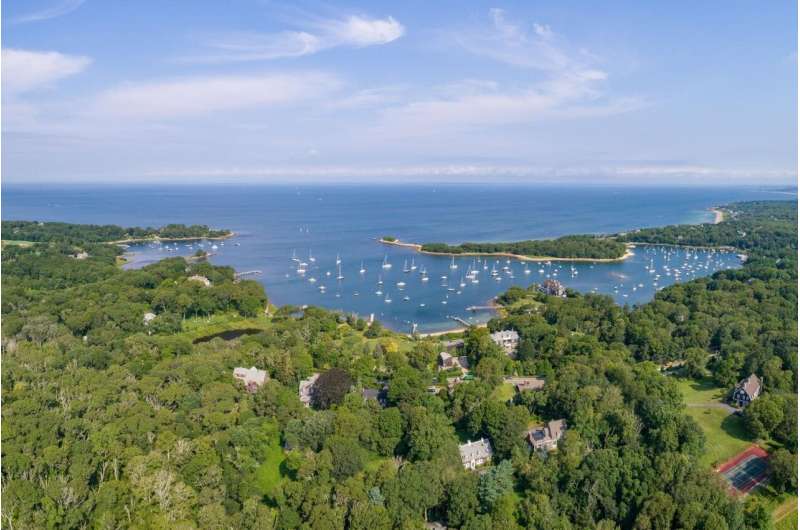Citizens and scientists release 28-year record of water quality in Buzzards Bay

A long-lasting, successful relationship between scientists at the MBL Ecosystems Center and the citizen-led Buzzards Bay Coalition has garnered a long-term record of water quality in the busy bay that lies west of Woods Hole. That record has already returned tremendous value and last week, it was published in Scientific Data, a Nature journal.
"We hope getting this data out will encourage scientists to use it to test new hypotheses and develop new insights into Bay health," said Rachel Jakuba, science director of the Buzzards Bay Coalition and lead author of the journal article.
Since 1992, a large and dedicated team of citizen volunteers, dubbed Baywatchers, has been collecting water samples from more than 200 sites along the coast of Buzzards Bay. The samples have been analyzed at the Marine Biological Laboratory (MBL) since 2008 under the direction of Chris Neill, a former MBL scientist who is now at Woodwell Climate Research Center, and MBL Senior Research Assistant Richard McHorney. The goal is to document the effects of nitrogen pollution in the Bay, including low oxygen levels that threaten marine life, in order to inform policies to improve Bay health.
"Baywatchers data directly influence policy by documenting impaired waters, making the public aware of long-term water quality trends, and importantly, documenting how water quality improves when communities upgrade water infrastructure, like fixing antiquated wastewater treatment plants," said Neill. "They also show the Bay's waters are warming rapidly."
The main sources of nitrogen pollution in the 430-square-mile Bay are private septic systems and underperforming wastewater treatment plants. Collaborations such as the MBL-Buzzards Bay Coalition's are essential to move science toward societal solutions.

"Scientists can provide information on the causes and consequences of excess nitrogen loading and suggest alternatives, while citizens groups can push for action and help bring together citizens, regulators, and policy makers to achieve a solution," said MBL Ecosystems Director Anne Giblin. Giblin and MBL Senior Scientist Ivan Valiela were among a group of scientists who helped the Coalition formulate and establish the Baywatchers program in the early 1990s.
Baywatchers data have been used to identify nearly 30 bodies of water around the Bay that do not meet federal standards under the Clean Water Act, evaluate wastewater discharge permits, support the development of targets for reduction of nitrogen pollution, and develop strategies for reaching those goals. And the Baywatchers program itself elevates public awareness and generates support for actions to control nutrient pollution and improve water quality.
"With a program like Baywatchers, every one of those citizen volunteers not only collects samples, they go out and talk to their friends about the nitrogen issue. That is a huge public education benefit. By making sure those volunteers are well educated in the scientific facts, you get this tremendous informal education program going," Giblin said.
Baywatchers is one of the largest and longest-running water quality monitoring programs in the country, and its dataset on water quality in Buzzards Bay keeps growing.
"Over the past 30 years, the Coalition has prioritized our commitment to comprehensive water quality monitoring above all else—placing sound science at the core of our work and successes in restoring and protecting the Bay. It is a function that continues to develop as we expand the density of our monitoring stations, parameters measured, methods for collection, and scientific collaborations. Making our entire dataset available through peer-reviewed publication is an important step and I'm indebted to the many scientists, citizens, and funders who got us to this milestone," said Rasmussen.
More information: Rachel W. Jakuba et al, Water quality measurements in Buzzards Bay by the Buzzards Bay Coalition Baywatchers Program from 1992 to 2018, Scientific Data (2021). DOI: 10.1038/s41597-021-00856-4
Provided by Marine Biological Laboratory




















